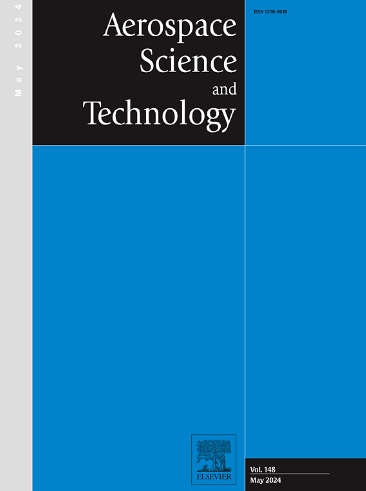利用旁路双喉喷管技术研究矢量推力对飞机机动性的影响
IF 5
1区 工程技术
Q1 ENGINEERING, AEROSPACE
引用次数: 0
摘要
随着流体推力矢量技术的逐步成熟,未来的先进战斗机有望采用具有更高矢量效率的新型喷管。本文介绍了一种创新的分析框架,将非线性飞机动力学与推力矢量喷管无缝集成。以F-16飞机模型和旁路双喉喷管(BDTN)为例,分析了推力矢量对飞行性能的影响。关键研究结果表明,推力矢量喷管显著提高了飞机爬升性能,爬升率显著提高28.1%。此外,与这些喷嘴相关的流动损失对飞机的运动学状态影响最小,在20%推力损失的情况下,10秒内对机械能的影响仅为4.2%。对于推力矢量模型在给定的俯仰速率下执行机动,出现了一个临界速度阈值。当推力矢量大于或等于这个阈值时,可以增强飞机的机动性;然而,低于这个阈值的速度可能导致空速损失和失速风险增加,强调最佳性能所必需的微妙平衡。最后,研究表明,在复杂机动过程中,推力矢量增强了飞机的侧滑能力,进一步强调了推力矢量对提高飞机整体飞行性能的重要性。本文章由计算机程序翻译,如有差异,请以英文原文为准。
Exploring the impact of vector thrust on aircraft maneuverability utilizing bypass dual throat nozzle technology
With the progressive maturation of fluidic Thrust Vectoring technology, future advanced fighter aircraft are poised to adopt the new nozzle with higher vector efficiency. This research paper introduces an innovative analytical framework that seamlessly integrates nonlinear aircraft dynamics with thrust vectoring nozzles. An F-16 aircraft model and a bypass dual throat nozzle (BDTN) are introduced to analyze the impact of thrust vectoring on flight performance. Key findings indicate that thrust vectoring nozzles significantly enhance aircraft climb performance, resulting in a notable 28.1% increase in climb rate. Furthermore, the flow losses associated with these nozzles have minimal influence on the aircraft's kinematic state, with a mere 4.2% impact on mechanical energy within 10 s under a 20% thrust loss scenario. For thrust-vectored models performing maneuvers at a given pitch rate, a critical velocity threshold emerges. Above or equal to this threshold, thrust vectoring augments aircraft maneuverability; however, velocities below this threshold may lead to airspeed loss and increased risk of stall, emphasizing the delicate balance necessary for optimal performance. Lastly, the study reveals that during complex maneuvers, thrust vectoring enhances the aircraft's sideslip capability, further underlining its significance in enhancing overall flight performance.
求助全文
通过发布文献求助,成功后即可免费获取论文全文。
去求助
来源期刊

Aerospace Science and Technology
工程技术-工程:宇航
CiteScore
10.30
自引率
28.60%
发文量
654
审稿时长
54 days
期刊介绍:
Aerospace Science and Technology publishes articles of outstanding scientific quality. Each article is reviewed by two referees. The journal welcomes papers from a wide range of countries. This journal publishes original papers, review articles and short communications related to all fields of aerospace research, fundamental and applied, potential applications of which are clearly related to:
• The design and the manufacture of aircraft, helicopters, missiles, launchers and satellites
• The control of their environment
• The study of various systems they are involved in, as supports or as targets.
Authors are invited to submit papers on new advances in the following topics to aerospace applications:
• Fluid dynamics
• Energetics and propulsion
• Materials and structures
• Flight mechanics
• Navigation, guidance and control
• Acoustics
• Optics
• Electromagnetism and radar
• Signal and image processing
• Information processing
• Data fusion
• Decision aid
• Human behaviour
• Robotics and intelligent systems
• Complex system engineering.
Etc.
 求助内容:
求助内容: 应助结果提醒方式:
应助结果提醒方式:


